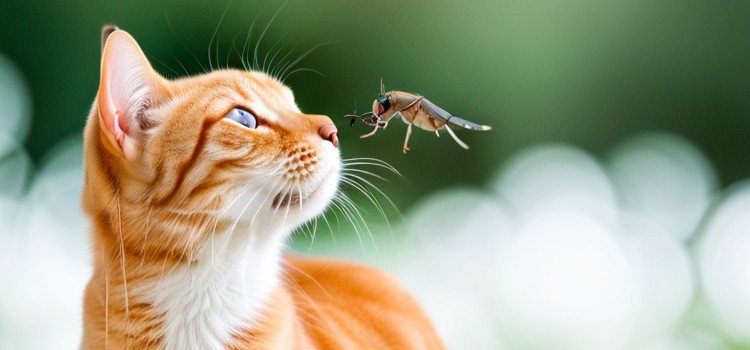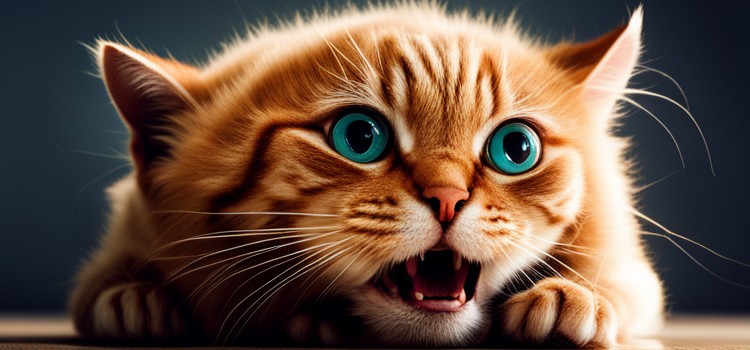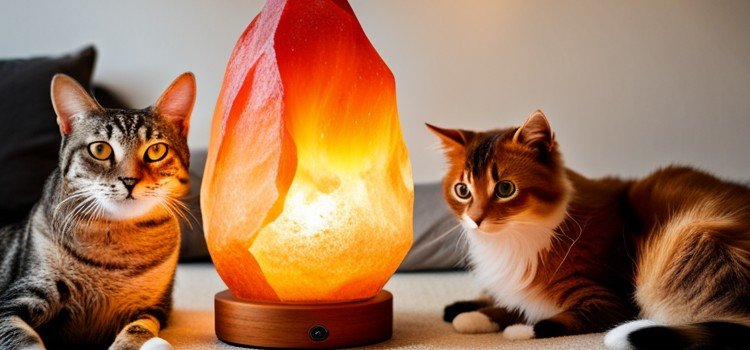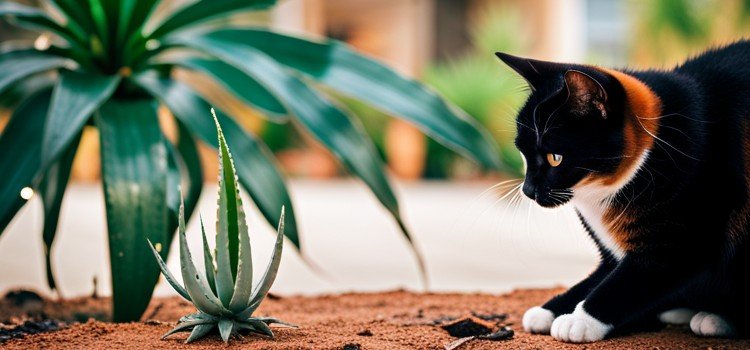As an Amazon Associate committed to the mission of improving the lives of our readers, Live-Clear.com receives a small commission from eligible purchases made through our affiliate links. This revenue enables us to keep producing insightful articles and other material.
Cats may not necessarily enjoy the smell of vanilla. However, they may be attracted or curious about it.
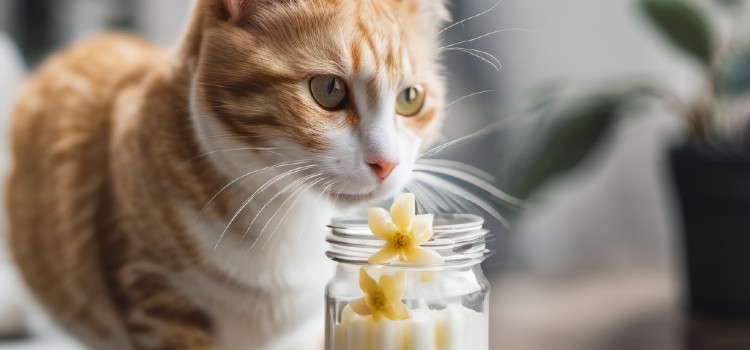
Vanilla scent may catch a cat’s attention due to its sweet and distinct aroma, but individual preferences can vary among cats.
Understanding A Cat’s Sense Of Smell
Cats have an incredible sense of smell that plays a vital role in their daily lives. Understanding how their sense of smell works can give us valuable insights into their behavior and preferences. In this section, we will explore the importance of smell for cats and how they differ from humans in smell perception.
The Importance Of Smell For Cats
A cat’s sense of smell is crucial for survival and various other aspects of their lives. Here’s why:
- Marking territory: Cats have scent glands on various parts of their bodies, including the face, paws, and tail. By rubbing against objects, they leave their unique scent, marking their territory and communicating with other cats.
- Identifying individuals: Cats use their sense of smell to recognize other cats, humans, and even other animals. They can distinguish familiar scents from strangers.
- Food preferences: A cat’s sense of smell helps them locate food, often guiding them to their meals even when it’s not visible. It also influences their preferences for certain aromas, which can make a difference in their willingness to eat.
- Reproduction and mating: Female cats release pheromones when they are ready to mate, signaling their availability to males. The male cats use their sense of smell to detect and follow these pheromones.
- Emotional well-being: Smells can impact a cat’s mood and emotional state. Familiar scents like the smell of their owners or home can provide comfort and reduce anxiety.
How Cats Differ From Humans In Smell Perception
Cats have a far more refined sense of smell compared to humans. Here are some key differences:
| Cats | Humans |
| Have approximately 200 million scent receptors. | Have approximately 5 million scent receptors. |
| Can detect a wide range of chemical compounds in low concentrations. | Require higher concentrations to detect similar chemical compounds. |
| Can perceive smells over a bigger area due to a specialized organ called the Jacobson’s organ. | Perceive smells over a smaller area. |
| Have a more detailed sense of smell, which helps them analyze scents deeply. | Have a limited sense of smell compared to cats. |
These differences highlight the significant advantage cats have in experiencing and understanding the world through scents. It’s essential to consider a cat’s exceptional olfactory abilities when evaluating their behaviors and preferences.
The Effects Of Vanilla Smell On Cats
Vanilla is a delightful fragrance that many humans enjoy, but what about our feline friends? Do cats like the smell of vanilla? The effects of vanilla smell on cats can vary from one cat to another. In this article, we will explore cats and their reaction to vanilla, why some cats may be attracted to the scent, and possible negative reactions that can occur when cats are exposed to vanilla smell.
Cats And Their Reaction To Vanilla
Cats have a keen sense of smell, which is far more sensitive than our own. When cats encounter new scents, it can evoke a range of reactions. Some cats may be instantly drawn to the smell of vanilla, while others may be indifferent or even repelled by it. It’s important to observe your cat’s behavior when introducing any new scent, including vanilla, to determine its effect on your feline companion.

Why Some Cats May Be Attracted To Vanilla
There are a few reasons why some cats may be attracted to the smell of vanilla. One possibility is that cats are naturally drawn to sweet scents, as they associate them with pleasant experiences, such as the aroma of their favorite treats. Additionally, vanilla contains a compound called vanillin, which may have a calming effect on cats. This could explain why some cats appear to be enamored with the smell of vanilla.
Possible Negative Reactions To Vanilla Smell
While many cats may enjoy the smell of vanilla, it’s important to note that not all cats will have a positive reaction. Some cats may be sensitive or even allergic to certain scents, including vanilla. If your cat exhibits any of the following signs when exposed to the smell of vanilla, it’s best to avoid using vanilla-scented products:
- Sneezing or coughing.
- Watery or irritated eyes.
- Nasal congestion.
- Excessive grooming or scratching.
- Behavioral changes, such as increased agitation or anxiety.
If you suspect that your cat is having a negative reaction to vanilla smell, it’s always a good idea to consult with your veterinarian for further guidance. They will be able to determine if your cat has an allergy or sensitivity to vanilla or if there may be an underlying issue causing the negative reaction.
Remember, each cat is unique, and their reaction to different scents, including vanilla, can vary. As a responsible owner, it’s essential to pay attention to your cat’s behavior and preferences when introducing new scents into their environment. Whether your cat loves or dislikes the smell of vanilla, always prioritize their comfort and well-being.
Training Cats Using Vanilla Smell
Training your cat using the scent of vanilla can be an effective method. Cats have a natural liking for the smell of vanilla, making it an ideal tool for training and positive reinforcement.
Using Vanilla Smell In Behavior Training
When it comes to training cats, finding the right sensory cues can make all the difference. One surprising scent that some cats respond to is vanilla. Yes, you read that right! Cats may have a fondness for the sweet, comforting aroma of vanilla, and as strange as it sounds, this scent can be used to your advantage in behavior training. Let’s explore how you can harness the power of vanilla to train your feline friend.
Teaching Cats To Respond To Vanilla As A Cue
If you’re wondering how to use vanilla as a training aid, the first step is introducing your cat to the scent. Start by placing a small amount of pure vanilla extract on a cotton ball or tissue. Allow your cat to sniff and investigate the vanilla-scented object in a calm and comfortable environment.
- Once your cat is familiar with the vanilla scent, you can use it as a cue in various training exercises.
- For instance, if you’re teaching your cat to come when called, associate the verbal cue “come” with the scent of vanilla. Call your cat while simultaneously releasing a light, pleasant aroma of vanilla into the air. Repeat this process consistently to establish the connection between the command and the smell of vanilla.
- Extend the use of vanilla to encourage other desired behaviors. For example, apply a small amount of vanilla-scented oil to a scratching post to discourage your cat from scratching furniture. This encourages your cat to use the designated post. To make vet visits more comfortable, dab a bit of vanilla extract on the carrier to create a soothing ambiance.
- Use positive reinforcement by rewarding your cat with treats or praise whenever it exhibits the desired behavior. This step is crucial in reinforcing the connection between the vanilla scent and positive experiences.
- With time and consistency, your cat will associate the vanilla scent with positive experiences, making it even more effective in training sessions.
In conclusion, integrating the delightful scent of vanilla into your training routine can help your cat associate commands and behaviors with a positive sensory cue, fostering a stronger bond between you and your furry friend. The power of the smell of vanilla should not be overlooked as a natural and unique way to train your cat.
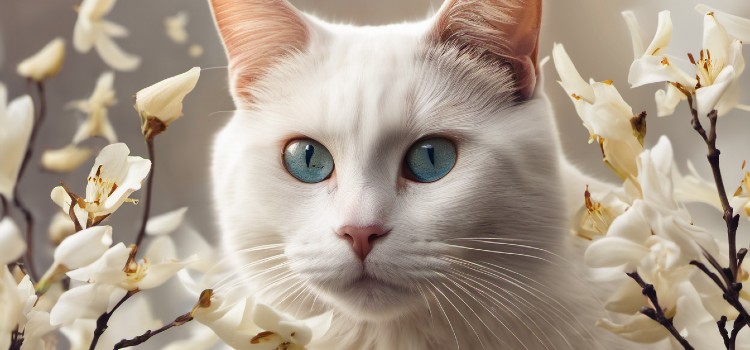
Using Vanilla As Enrichment For Cats
Cats are curious creatures, always on the lookout for new experiences and sensory stimulation. While you may already be familiar with the idea of using toys and treats to entertain your feline friend, have you ever considered using scents to enrich their environment? One such scent that surprisingly captivates many cats is vanilla. Its warm and sweet aroma has been known to appeal to our furry friends, sparking their interest and providing them with an extra source of enrichment. In this blog post, we explore the fascinating world of using vanilla as enrichment for cats, diving into the benefits it offers and different ways to incorporate this delightful scent into their environment.
Creating A Vanilla-infused Environment For Cats
Creating a vanilla-infused environment for your cat is easier than you might think. By strategically placing vanilla-scented items throughout their space, you can provide them with a sense of novelty and intrigue. Here are a few simple ways to bring the enticing aroma of vanilla into their environment:
- Use vanilla-scented candles or reed diffusers in the areas your cat frequents, such as the living room or their favorite nap spot. Make sure to place these items out of reach to prevent any accidents.
- Add a drop of pure vanilla extract to an unscented cotton ball and place it in their bedding or hiding spots. This will create a subtle and safe scent that can provide a calming and comforting effect for your cat.
- Consider purchasing cat-friendly vanilla-scented toys or scratching posts. These specially designed items provide an interactive experience and can keep your cat engaged and entertained.
- When grooming your cat, opt for vanilla-scented grooming products. This not only keeps your feline friend smelling fresh but also adds a touch of vanilla to their coat, enveloping them in a familiar and pleasant aroma.
The Benefits Of Vanilla Enrichment For Cats
The use of vanilla as an enrichment tool for cats offers numerous benefits. Here’s why you should consider incorporating this delightful scent into your cat’s environment:
- Vanilla has a calming effect on cats, helping to reduce stress and anxiety.
- The comforting aroma of vanilla can create a sense of security and familiarity for your cat, making them feel more at ease in their surroundings.
- Introducing new scents, such as vanilla, can stimulate your cat’s senses and promote mental stimulation, preventing boredom and encouraging exploration.
- Vanilla-enriched environments can be particularly beneficial for cats with behavioral issues or those recovering from illness or surgery, as it can help them feel more relaxed and content.
Incorporating the enchanting scent of vanilla into your cat’s environment is a simple and effective way to provide them with additional sensory experiences. By creating a vanilla-infused space, you can help reduce stress, promote mental stimulation, and enhance their overall well-being. Give it a try and watch as your feline friend discovers the wonders of this captivating aroma.

Potential Health Concerns
Cats are generally indifferent to the smell of vanilla, but some may be attracted to it. However, it is important to note that some products containing vanilla can be toxic to cats, so it is best to keep them away from such items.
How To Safely Introduce Vanilla To Cats
While the enticing scent of vanilla may be pleasing to our human noses, it’s essential to consider the potential health concerns associated with exposing our feline friends to this aromatic spice. Cats have a unique physiology, and certain substances that are harmless to us can pose health risks to them. When it comes to vanilla, there are a few important factors to keep in mind to ensure the safety and well-being of our beloved cats.
Is Vanilla Safe For Cats?
When used in moderation and under safe conditions, vanilla is generally considered safe for cats. However, it’s crucial to note that some cats may have sensitivities or allergies to certain substances, including vanilla. If your cat has a history of allergies or adverse reactions, it’s best to consult with your veterinarian before introducing vanilla into their environment. Additionally, while vanillin is the primary compound responsible for the characteristic vanilla scent, artificial vanilla extracts and flavored products may contain additives that could potentially be harmful to cats.
How To Safely Introduce Vanilla To Cats
If you decide to introduce the aroma of vanilla to your cat, it’s essential to do so safely and carefully. Here are some steps to help you safely introduce vanilla scent to your feline friend:
- Choose Natural Vanilla: Opt for natural vanilla over artificial extracts or flavored products. Natural vanilla is generally purer and free from potentially harmful additives.
- Use a Safe Diffuser: If you plan to use a diffuser to disperse the vanilla scent, ensure that it is specifically designed for use with cats and does not emit essential oils or other potentially toxic substances.
Dilute Vanilla Extract: If you want to apply vanilla extract or essential oil directly to your cat’s bedding or toys, dilute it with water to create a mild concentration. This will help minimize the risk of any adverse reactions. - Observe Your Cat’s Response: After introducing the vanilla scent, closely observe your cat for any signs of discomfort, allergies, or gastrointestinal issues. If you notice any adverse reactions, discontinue use immediately and consult your veterinarian.
- Avoid Ingestion: While tempting, avoid allowing your cat to consume or lick vanilla extract directly. Vanilla, especially in high concentrations, can disrupt a cat’s digestive system and cause discomfort.
Remember, each cat is unique, and what may be safe for one might not be suitable for another. If you have any concerns or questions regarding using vanilla with your cat, it’s always best to consult your veterinarian for personalized advice. By taking the necessary precautions and closely monitoring your cat’s response, you can safely introduce the delightful scent of vanilla into their environment, enhancing their sensory experience without compromising their health and well-being.
Alternatives To Vanilla For Cat Enrichment
Cats are known for their curious and inquisitive nature, and providing them with sensory enrichment can greatly enhance their well-being. While vanilla is a popular scent that many cats may enjoy, there are other alternatives that can pique their interest and keep them engaged. Exploring different scents and smells, as well as various enrichment options, can provide your feline friend with a stimulating environment.
Other Scents And Smells Cats Enjoy
Cats have a strong sense of smell, and introducing different scents can create a multi-dimensional experience for them. Some scents and smells that cats may enjoy include:
- Lavender: The soothing aroma of lavender can help relax your cat and create a calming atmosphere.
- Mint: Mint has a refreshing scent that can invigorate cats and keep them alert.
- Catnip: Catnip is a well-known scent that can induce a playful and energetic response in many cats.
- Valerian root: Valerian root has a musky scent that can attract cats and stimulate their senses.
Exploring Different Enrichment Options
Aside from scents, there are various enrichment options you can consider to keep your cat mentally stimulated and entertained. These include:
- Puzzle toys: Puzzle toys require cats to use their problem-solving skills to obtain treats or toys hidden inside.
- Interactive play sessions: Engaging your cat in interactive play using toys, laser pointers, or feathers can help stimulate their hunting instincts.
- Scratching posts and climbing towers: Providing cats with vertical spaces to explore and scratch can fulfill their natural desire to climb and mark territory.
- Window perches: Installing a window perch allows cats to observe the outside world, providing visual stimulation and entertainment.
It’s important to remember that each cat is unique and may have different preferences when it comes to scents and enrichment options. Take the time to observe your cat’s reactions and adjust accordingly to ensure their optimal enrichment and well-being.

Conclusion
To wrap up, it’s clear that cats have differing preferences when it comes to smells, including vanilla. While some may find it appealing and calming, others might not show much interest. Observing your cat’s individual reaction is the best way to determine their affinity for the vanilla scent.
Frequently Asked Questions For Do Cats Like Vanilla Smell
Cats do not typically have a preference for the smell of vanilla. While some cats may be attracted to it, it is not a universal preference among felines.
Some cats may dislike the smell of vanilla due to their individual preferences or sensitivities to certain scents. Each cat has unique preferences and reactions to different smells.
There are no specific benefits of using vanilla-scented products for cats. It is important to note that cats have a highly sensitive sense of smell, so strong scents like vanilla may be overwhelming or unpleasant for them.
The smell of vanilla itself is not known to have any negative effects on cats. However, as mentioned earlier, some cats may have sensitivities to strong scents, so it is always best to observe your cat’s reaction when introducing new smells.
Cats have individual preferences when it comes to scents. While some may enjoy certain natural scents like catnip or valerian, it varies from cat to cat. It’s important to remember that each cat is unique and may have different scent preferences.
Overall, it’s important to remember that each cat is unique and may have their own distinct olfactory preferences.
Amazon and the Amazon logo are trademarks of Amazon.com, Inc, or its affiliates.
